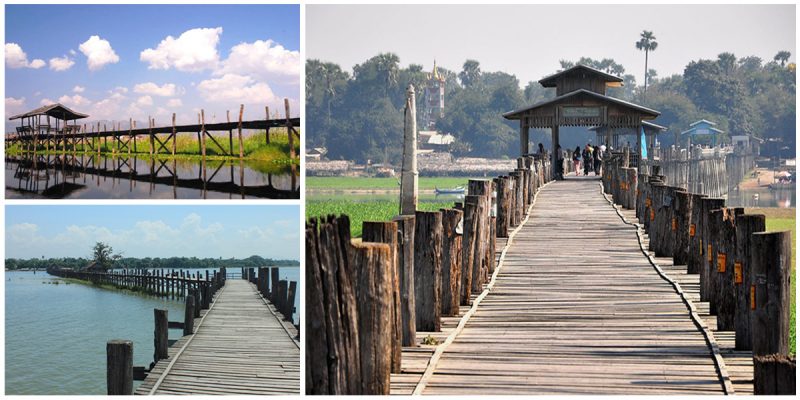Situated in the ancient city of Amarapura, Mandalay Region, the U Bein Bridge is an impressive structure that stretches almost 1,200 meters across the Taungthaman Lake. Built from teak planks in the mid-1800’s , it is believed to be the oldest and longest teakwood bridge in the world.
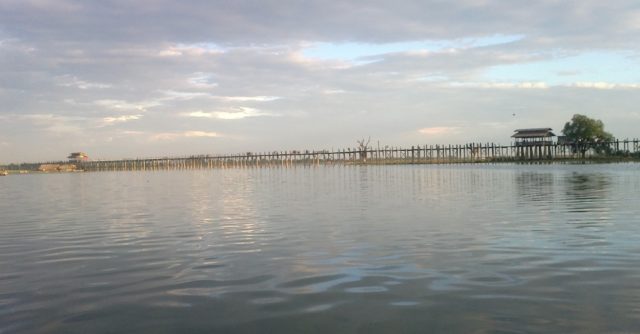
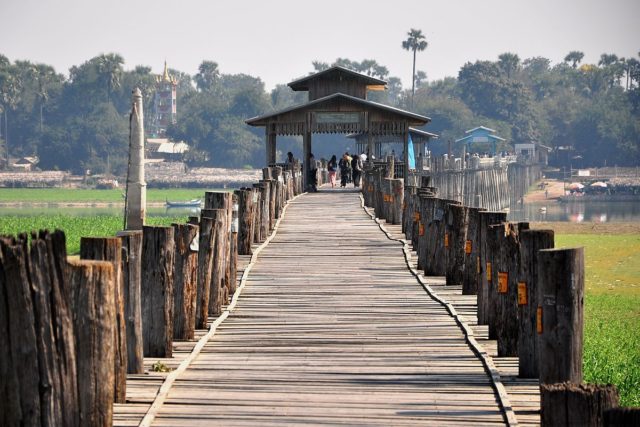
Amarapura is one of Myanmar’s former capitals. It was built by King Bodawpaya in 1783 and served as the centre of power until 1857 when the capital moved to Mandalay.
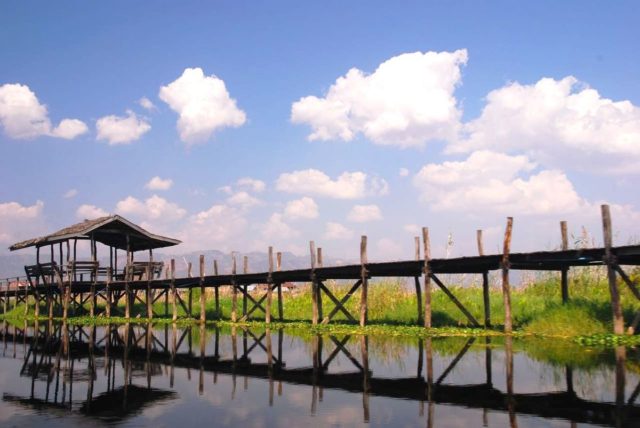
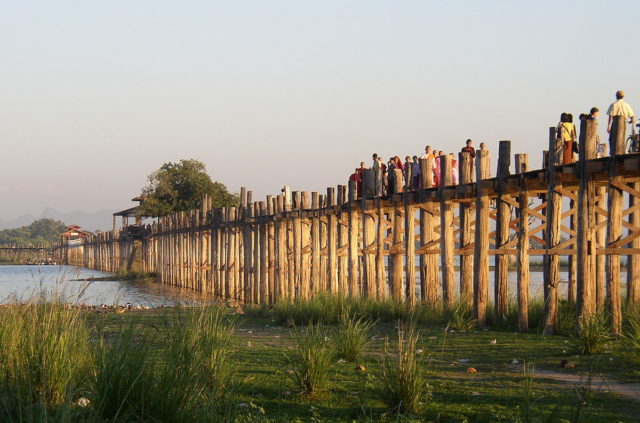
Construction on the wooden bridge was started in 1849 and finished in 1851. It was built by mayor U Bein around 1860 by salvaging Teak planks and columns from the former Inwa Palace at Amarapura, which was destroyed while moving the capital to Mandalay.
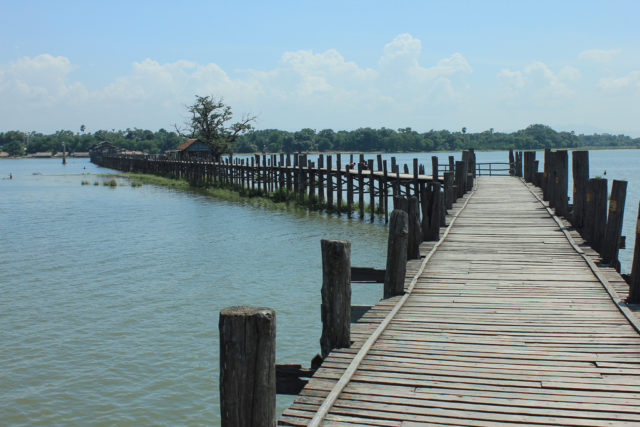
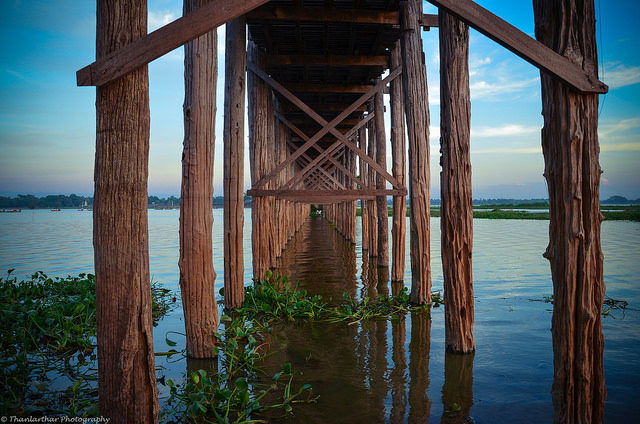
In history, the bridge was made entirely of wood. Now even though the bridge remains largely intact, there are fears that an increasing number of the pillars are becoming dangerously decayed, and so some have been replaced with concrete. Millions have been spent to maintain the bridge since the 1940s, with more than K22 million being spent since 2005.
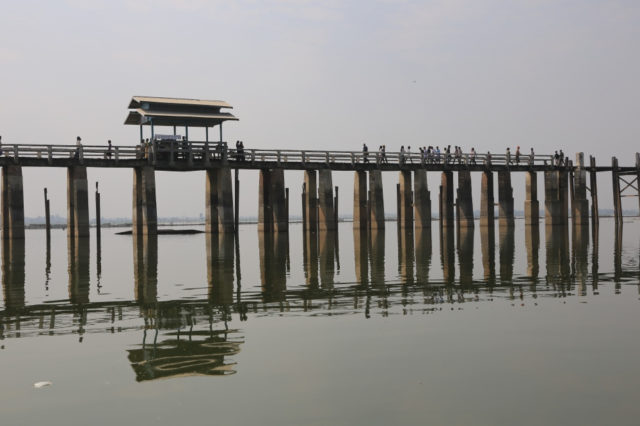
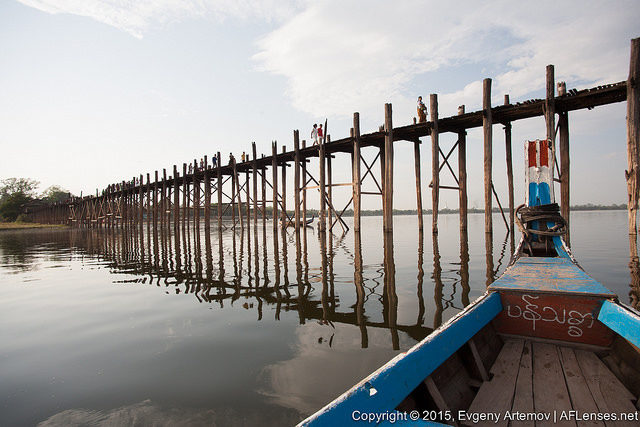
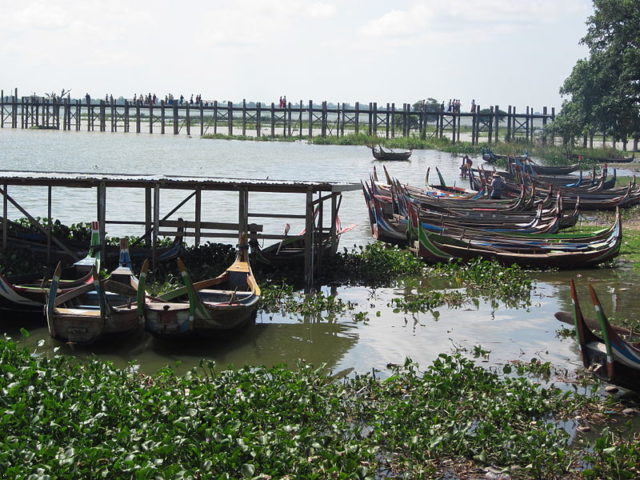
In accordance with ancient methods of scaling and measuring, the bridge was built at a slight curve and is supported by over a thousand wooden pillars that were hammered into the bottom of the shallow lake. It features 1,086 pillars that stretch out of the water, some of which have been replaced with concrete.
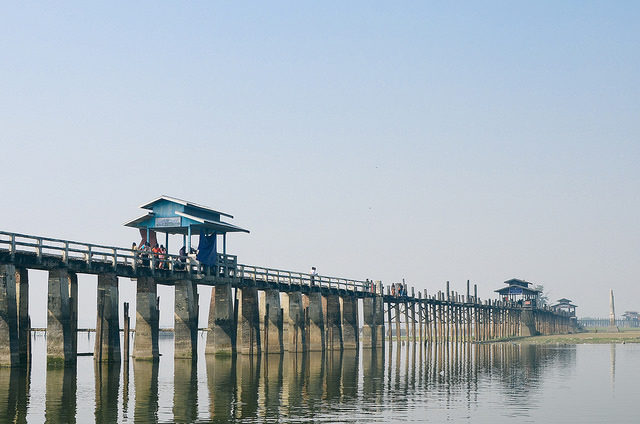
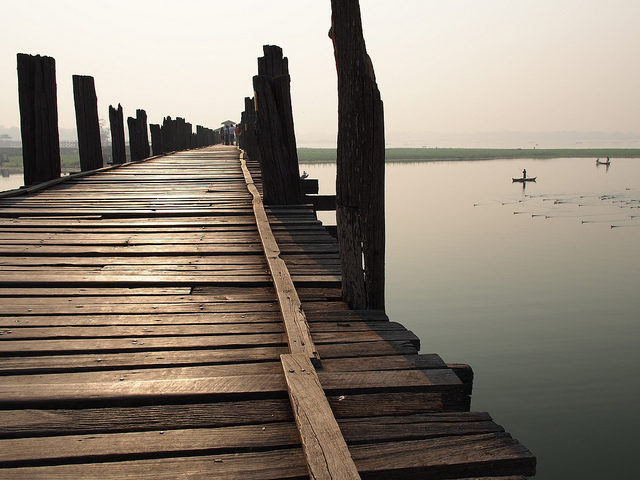
The bridge’s attraction is not simply in its structure, but that it remains a central part of the community, as hundreds of locals cross the lake daily to go to and return from work.
